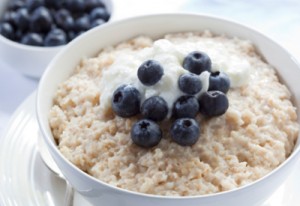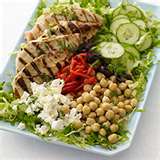All posts by gshort@shortfam.com
Dieting Mistakes You Are Making
Kate Fodor
Sunday, April 29, 2012
Eating less, but not losing
 Trying to slim down and feeling frustrated?
Trying to slim down and feeling frustrated?
If you’re giving it your all but the number on the scale still isn’t budging, you may be sabotaging yourself in spite of your best intentions.
Here are a dozen dieting don’ts to help save your weight-loss efforts.
You eat fake foods
We admit that prepackaged weight-loss products like shakes and bars are convenient, but they may not be helping you to lose weight in the long run.
“You never feel satisfied after you eat something like that, because it’s just a bunch of processed stuff,” says Manuel Villacorta, a registered dietician and spokesperson for the Academy of Nutrition and Dietetics.
There are lots of healthier, more filling options with the same or fewer calories, like a cheese stick or a serving of plain nonfat Greek yogurt with fresh strawberries.
You burn the midnight oil
Sure, you need to log time at the gym, but to lose weight, you also need to log time in your bed.
Skimping on sleep, especially sleeping less than five or six hours a night, can slow your metabolism and cause hormonal changes that hurt your weight-loss efforts.
Being tired may also make you eat more. One recent study found that people who are sleep-deprived consume a whopping 500 extra calories a day.
You exercise too much
Yes, you read that right. Exercise is important, but Villacorta maintains that being too focused on it can backfire.
“People think that if they exercise they will magically lose weight, and then they get frustrated,” he cautions.
In fact, about 80% of dieting time and energy should be focused on nutrition and 20% on exercise, he says. “If I have a client who’s exercising six times a week, sometimes I’ll cut that in half and have them spend the extra hours shopping and planning meals.”
You always choose the salad
Contrary to popular belief, heading for the salad bar may not be your best option.
Salads may not contain enough carbohydrates to help control hunger hormones, according to Villacorta. He suggests a healthy soup and sandwich instead, or tossing a serving of brown rice, lentils, or garbanzo beans into your greens. And beware of high-calorie salad bar additions like blue cheese and candied walnuts.
Add enough of those and “you may as well just have a burger,” he says.
You’re a high-calorie health nut
Just because a food is healthy doesn’t mean you can eat a mountain of it.
Switching from white bread to whole wheat bread, eating nuts instead of chips, using olive oil instead of butter —these are all healthy changes. But they aren’t low-calorie substitutions, so portion control is still key.
You eat too early
Popular wisdom says not to eat in the evenings, but that may not make sense unless you turn in extra early.
“People eat at 6:00 and stay up until 11:00 or midnight, so their bodies are naturally asking for fuel again,” Villacorta says. “I tell people to aim to eat 70% of their calories before dinner and 30% at dinner, but it doesn’t matter how late dinner is.” Healthy eating in the evening can prevent a late-night binge on ice cream or cookies.
You’re a loner
Remember the buddy system from your kindergarten field trips? It works for dieting, too. Studies show that support from friends and family increases the likelihood that women will lose weight.
If you can’t get what you need from your nearest and dearest, other forms of support—including advice from a weight-loss counselor or encouragement from online buddies—can also do the trick.
You never snack
To keep your metabolism at its peak, you need to eat every three to four hours.
“People think they need to eat less frequently, but really they need to eat more often, in smaller amounts,” Villacorta advises. “There’s no real reason you need to think in terms of breakfast, lunch, and dinner.”
You don’t have a diary
One large-scale study found that keeping a daily food journal doubled the amount of weight participants lost.
Researchers speculate that simply writing down what you put in your mouth makes you more accountable and cuts your daily calories.
Create your own food log or use one of the many available for free online.
You don’t like water
Substituting water for sugary sodas and even for juices can make a major dent in your daily calorie count. Drinking water may also help you manage your appetite.
In one study, people who drank two glasses of water before eating a meal consumed up to 90 fewer calories.
You skip breakfast
There’s lots of evidence that people who eat breakfast tend to have healthier weights, so start the day right by making time for a morning meal.
Experts say whole-grain cereal is one of the best breakfast choices for dieters.
It’s quick and easy, too—so there goes the excuse about not having time before work.
You hate to cook
Restaurant meals are frequently more caloric than home-cooked ones, so dust off your apron and hunt down some healthy recipes.
When you do eat out, consider splitting a meal with your date or asking the water to serve you half of your meal and have the other half boxed up to go.
Original Article:
Cub Scout Pack Meeting with an Olympian
Last week for our Cub Scout Pack meeting we were honored to be joined by 2 time Olympian Marsha Baird. She showed the cub scouts some train and running technique. It was a fantastic time like always with cub scouts but Marsha really took our meeting to a new level!!
5 Surprising Happiness Tricks
Feeling down? Try these all natural moves to boost your mood big time.
Right about now, we’re guessing you could use a little pick-me-up. Unpredictable weather and the serious lack of national holidays on the horizon can be a giant bummer. And while we can’t make summer hurry up and get here any quicker, these surprising—easy!—moves can have a big impact on your happiness levels right now. Try these research-backed tips for a sunnier disposition.
 The water bottle, that is. Being mildly dehydrated can make your mood, energy levels, and ability to think clearly plummet—especially if you’re a woman, according to a new study in The Journal of Nutrition. Your urine is a good way to gauge your hydration level: The darker it is, the more likely you’re dehydrated.
The water bottle, that is. Being mildly dehydrated can make your mood, energy levels, and ability to think clearly plummet—especially if you’re a woman, according to a new study in The Journal of Nutrition. Your urine is a good way to gauge your hydration level: The darker it is, the more likely you’re dehydrated. eople exposed to nature not only feel less stressed, but they also have lower levels of the stress-hormone cortisol in their bodies, finds a recent study from researchers at the University of Edinburgh in Scotland. Take a few minutes to connect with nature by taking a quick walk during your lunch break—city parks count!—or bundle up with your honey for some after-dinner stargazing. Instead of a weekend brunch date, meet your buddy for a Sunday morning hike.
eople exposed to nature not only feel less stressed, but they also have lower levels of the stress-hormone cortisol in their bodies, finds a recent study from researchers at the University of Edinburgh in Scotland. Take a few minutes to connect with nature by taking a quick walk during your lunch break—city parks count!—or bundle up with your honey for some after-dinner stargazing. Instead of a weekend brunch date, meet your buddy for a Sunday morning hike. We know, we know: When you’re bummed out, hitting the track for 15 minutes is the last thing you want to do. But if you needed another reason to be convinced that getting some exercise really can make you feel better, try these: Study participants who did at least 15 minutes of vigorous physical activity reported higher levels of excitement, finds a new study in the Journal of Sport & Exercise Psychology. Another exercise bonus: Workers who exercise are half as likely to experience burnout as their sedentary counterparts, reports new research in the Journal of Applied Psychology.
We know, we know: When you’re bummed out, hitting the track for 15 minutes is the last thing you want to do. But if you needed another reason to be convinced that getting some exercise really can make you feel better, try these: Study participants who did at least 15 minutes of vigorous physical activity reported higher levels of excitement, finds a new study in the Journal of Sport & Exercise Psychology. Another exercise bonus: Workers who exercise are half as likely to experience burnout as their sedentary counterparts, reports new research in the Journal of Applied Psychology.Weight Loss Tips That Don’t Suck
By Camille Noe Pagan
If weight loss came in a pill, the list of side effects might include “May cause shortness of cash” and “Some users experience a loss of friendships.” After all, that’s what happens when you spend half a paycheck on healthy food and pass up happy-hour invites so you can avoid the bar snacks. And those side effects aren’t just misery inducing, they’re self-defeating too: The Centers for Disease Control and Prevention found that people who turned these pitfalls into excuses were up to 76 percent less likely to lose weight than those who figured out ways around them. This advice will help you battle the bulge without missing a beat of your life.
came in a pill, the list of side effects might include “May cause shortness of cash” and “Some users experience a loss of friendships.” After all, that’s what happens when you spend half a paycheck on healthy food and pass up happy-hour invites so you can avoid the bar snacks. And those side effects aren’t just misery inducing, they’re self-defeating too: The Centers for Disease Control and Prevention found that people who turned these pitfalls into excuses were up to 76 percent less likely to lose weight than those who figured out ways around them. This advice will help you battle the bulge without missing a beat of your life.
Lose Weight, Not Friends
Ever notice that the day you announce you’re starting a new diet, your friends go AWOL? Here’s why: Cutting calories causes your level of serotonin (a feel-good brain chemical) to nosedive, leaving you cranky and unpleasant to be around.
To keep your serotonin levels in check, figure out how many calories your body needs based on your activity level. And make sure those calories are split evenly among protein, whole grains, and produce at every meal.
“Unbalanced meals—made entirely of refined carbs, for example—cause blood-sugar fluctuations that make you irritable,” says Caroline M. Apovian, M.D., director of the Nutrition and Weight Management Center at Boston Medical Center.
Apovian also recommends adding omega-3 fatty acids to your diet, because research shows that they may fight depression and slow digestion, which helps you stay full longer. (Try eating two or three three-ounce servings of salmon a week, or adding a tablespoon of olive oil, canola oil, or flaxseeds into your daily meals.)
Lose Weight, Not Money
When you’re on a diet, you expect your stomach to be on the empty side—not your wallet. But researchers at the University of Washington found that the cost of healthy, nutrient-dense foods like whole grains and lean meats has increased nearly 30 percent in the past four years, while candy and soft drinks have gone up only 15 percent.
One money-saving tactic: Eat less meat. “Meat is one of the priciest items on a grocery bill, and most Americans eat more of it than they should,” says Dawn Jackson Blatner, R.D., a spokesperson for the American Dietetic Association and the author of The Flexitarian Diet. Plus, meat is a source of excess calories and saturated fat.
Most women can slash around 15 percent of their daily calories by sticking to one or two servings of meat a day, estimates Blatner. Fill the void with fiber-rich foods like beans, oatmeal, and brown rice, plus hearty veggies like portobello mushrooms and eggplant. All of these will fill you up for a fraction of the calories and cash.
Lose Weight, Not Time
In a recent study, 41 percent of women cited “not enough time” as the reason they don’t eat better. Spending just an hour or two on the weekend shopping for a week’s worth of healthy meals and getting a jump-start on the prep work (cutting veggies, making marinades) will save you time and pounds in the long run. A survey by the CDC found that almost 40 percent of people who lost a significant amount of weight and kept it off planned their weekly meals.
“When you don’t map out your meals, you’re too tempted to grab whatever’s nearby, which is often high-calorie junk,” says Elizabeth Ricanati, M.D., founding medical director of the Lifestyle 180 Program at the Cleveland Clinic.
Lose Weight, Not Muscle
If you drop weight without lifting any, you risk shedding muscle tissue instead of fat. Muscle takes more than twice as many calories to maintain, and it keeps your metabolism revving at peak calorie-burning speed, so it’s important to hang on to it, says Donald Hensrud, M.D., an associate professor of preventive medicine and nutrition at the College of Medicine at the Mayo Clinic.
Your best strategy is to eat lots of protein and strength train for 20 to 30 minutes two or three times a week. Protein will fuel those workouts and help you maintain lean muscle, says Hensrud. Eat at least three or four servings of two to three ounces of protein-rich beans, soy, fish, lean meat, poultry, or low-fat dairy every day.
Lose Weight, Not Your Lifestyle
Watching your waistline doesn’t mean you have to become a recluse who spends every spare moment on the elliptical machine. In fact, an all-or-nothing approach is counterproductive. “Many women make changes they’ll never be able to stick with—like eating nothing but raw food or vowing to go for a run at 5 a.m. every day—and set themselves up for failure,” says Hensrud. “Total deprivation doesn’t work.”
He advocates skipping extreme regimens in favor of small changes. When he asked a group of overweight study subjects to make several small lifestyle shifts—such as eating breakfast, having as many veggies as they’d like with each meal, and watching TV for only as long as they’d exercised that day—they dropped an average of eight pounds in two weeks. “When you combine a bunch of little strategies, the cumulative effect can be huge, and you won’t feel as if you’ve given up your entire life to be slim.”
Original Article: http://www.womenshealthmag.com/weight-loss/diet-rules?cm_mmc=Yahoo_Health-_-Your%20Body%20On___%20A%20Detox-_-Article-_-Weight%20Loss%20Tips%20That%20Don’t%20Suck
Foods for Deep Sleep
Food can be a strong support in the quest for a good night’s sleep. Some insomnia sufferers wake at night because their blood sugar drops too low. Adequate protein and healthy fat intake can help stabilize blood sugar through the night, and allow the liver to let out stored sugar molecules as needed for a good night’s sleep. Foods can also support the healthy production of brain neurotransmitters and create calming results in the body.
Here are the most common sleep scenarios and some of our favorite food solutions for sleep.
Solves This Problem: Trouble Falling Asleep
 The Montmorency cherry is a type of sour cherry. The color is not as dark as the cherries we typically see in the stores. These cherries are great because they have about 6 times the amount of melatonin than a regular cherry. If you can find a cherry juice concentrate, this will also increase the concentration of melatonin even more.
The Montmorency cherry is a type of sour cherry. The color is not as dark as the cherries we typically see in the stores. These cherries are great because they have about 6 times the amount of melatonin than a regular cherry. If you can find a cherry juice concentrate, this will also increase the concentration of melatonin even more.
Melatonin is a hormone produced in your brain’s pineal gland. When it gets dark outside, your eyes sense the lighting change and starts making this hormone, which communicates to your body that it is time to prepare to sleep. Melatonin helps maintain your daily body rhythms, and is an important antioxidant in the body known to fight cancer. In fact, low amounts are shown to increase risk of cancer.
You can find these special cherries in some fine food stores when they are in season. Sometimes they can be found in the frozen section, or look for a Montmorency cherry juice concentrate.
Solves This Problem: Trouble Staying Asleep
Pumpkin seeds and the powder from pumpkin seeds have relatively high amounts of the amino acid tryptophan. Tryptophan is the amino acid the body uses to make the feel-good and relaxation neurotransmitter serotonin. Pumpkin seeds also contain high amounts of zinc, which can help the brain convert tryptophan into serotonin. Serotonin levels are typically low in people who cannot stay asleep and wake throughout the night.
It is best to take about 1 cup of seeds or ½ cup of the powder with applesauce or another healthy carbohydrate; the carbohydrate allows the tryptophan to get into the brain in higher amounts.
Solves This Problem: Nervous Exhaustion and Sleeplessness
 A favorite breakfast food, oatmeal is really a cereal grain made from the herb Avena sativa. Avena is known in traditional herbal medicine as a calming plant that is nutritious for a frazzled nervous system. We often recommend regular intake of oatmeal to help our patients’ bodies cope with long-term stressors more effectively.
A favorite breakfast food, oatmeal is really a cereal grain made from the herb Avena sativa. Avena is known in traditional herbal medicine as a calming plant that is nutritious for a frazzled nervous system. We often recommend regular intake of oatmeal to help our patients’ bodies cope with long-term stressors more effectively.
Oats contain melatonin and complex carbohydrates that can help more tryptophan get into the brain to help you sleep. It also contains vitamin B6, a vitamin which is a co-factor that helps more serotonin get produced in the brain as well.
While you might think of oatmeal only as a breakfast food, it also is a smart choice for a bedtime snack. The Scottish recommend a bowl of oatmeal in the evening to get you feeling nice and sleepy.
Solves With Problem: Hormonal Issues With Sleep Problems
 Dark green leafy vegetables have more nutrients than we will probably ever completely understand. While dandelion is not traditionally known as a sleep-inducing food, we have found using the liver-cleansing properties of dandelion to be a valuable aid in helping sleep.
Dark green leafy vegetables have more nutrients than we will probably ever completely understand. While dandelion is not traditionally known as a sleep-inducing food, we have found using the liver-cleansing properties of dandelion to be a valuable aid in helping sleep.
A healthy liver will balance blood sugar. Blood sugar fluctuations and drops are a major factor in insomnia and waking at night. Hormonal issues, especially in perimenopause and post-menopause can also stop a woman from obtaining a good night’s sleep. In Chinese medicine, foods like dandelion can help balance the liver and nourish the yin, which ultimately strengthens the function of the blood, fluids and hormonal balance.
We like our dandelion as part of a good dinner. We often steam or blanch the dandelion first, then sauté with garlic and organic extra virgin olive oil.
Original Article: http://health.yahoo.net/articles/sleep/photos/what-eat-deep-sleep#0
Last Session of Yoga
With only 4 days left of me doing P90X2 brings the last session of yoga. So of course I filmed myself to show everyone that I truely do my yoga.
10 Tips and Tricks for Pleasing Picky Eaters
 Family dinners are supposed to be fun and relaxing, not epic battles over peas and broccoli. Here are ten simple ways to please picky eaters — from grandchildren to grandparents — without a lot of extra fuss.
Family dinners are supposed to be fun and relaxing, not epic battles over peas and broccoli. Here are ten simple ways to please picky eaters — from grandchildren to grandparents — without a lot of extra fuss.
Family dinners are supposed to be fun and relaxing, not epic battles over peas and broccoli. Here are ten simple ways to please picky eaters — from grandchildren to grandparents — without a lot of extra fuss.
1. Use nostalgia.
Seeing or smelling or tasting a food and being transported back to an earlier time is powerful, in part, because it’s so universal. Most people have fond memories of their mom’s meat loaf or their dad’s hamburgers or their grandma’s cookies. Tap into these memories when trying to find meals to please your picky eaters.
Older adults probably have a long list of foods they can remember eating and liking. Ask them about it. Is there a family recipe book or box of recipe cards that you can find? Can your mother remember the casserole her mother used to make — and teach you how to make it? Can your father remember what he ate on his first date — and share the story with the whole family over the same meal?
Even young kids experience food nostalgia. Ask them if they remember the barbecued chicken their grandfather made or the big pasta dinner you all had together at your parents’ house — and then eat the same meal together.
2. Create nostalgia.
With a little psychological maneuvering, you may be able to create nostalgic food memories as a family.
If you’re on a family vacation, try introducing new foods, especially if they’re regional specialties (corn in the Midwest, apples in the Northeast, coconuts in the Caribbean). People are more willing to try new foods — and new behaviors — when they’re out of their normal context and comfort zone. Especially for kids, the novelty of being in a new place might encourage them to try new foods.
If you happen upon a new food or two that they’re willing to eat on vacation, try those items again at home after a few weeks, while reminiscing about the highlights of the vacation.
3. Blanch vegetables like a pro.
It’s no surprise that most people don’t like Brussels sprouts that have been boiled to  near mushiness, or broccoli that’s steamed so much that it’s falling apart. There are better ways to cook vegetables so that even picky eaters will like them.
near mushiness, or broccoli that’s steamed so much that it’s falling apart. There are better ways to cook vegetables so that even picky eaters will like them.
Blanching sounds like a fancy French technique, but it’s actually surprisingly simple. Just bring a big pot of salted water to a boil and fill another big bowl with cold water. Using tongs, a heat-safe slotted spoon, or a kitchen sieve, lower a handful of prepped vegetables into the boiling water. Let them cook for a minute or two (experiment and adjust the timing to your taste and the type of veggie you’re cooking), and then scoop them out of the hot water and into the cold water. Let the water on the stove return to a boil, and then cook the next small batch of vegetables. This technique cooks veggies quickly but retains their satisfying crunch — and works particularly well for items such as broccoli florets or green beans.
4. Roast vegetables like a pro.
Roasting vegetables is even easier than blanching — just line a baking sheet with aluminum foil (to make cleanup easier), spread out prepped vegetables, and drizzle with some olive oil. Slide the sheet into a 400-degree oven, then pull it out when the vegetables are soft and caramelized.
Roasting brings out the natural sugars in produce, making the vegetables sweeter and therefore more likely to please a picky eater. Roasting works well for almost any vegetable, from eggplant to tomatoes to Brussels sprouts. Even kale and other greens can be roasted, which gives them a texture, almost like that of potato chips, that many picky eaters love.
5. Make mix-and-match meals.
There’s a reason that almost every cafeteria has a salad bar and why fast-food restaurants like Subway and Chipotle do so well: People love designing their own perfect meals.
It’s easy to set up the same system — essentially a mini buffet — at home. Invest in some cute plates and bowls (or your regular salad plates and soup bowls will do just fine) and place out lots of different ingredients for everyone to mix and match as they please.
If you’re making salads, set out the lettuce, carrots, cucumbers, cheese, apples, and salad dressing separately. If you’re making tacos or fajitas, put the meat in one bowl, the cheese in another, the avocado in another, and the salsa in yet another. You can make sandwich bars this way, or serve a soup with several optional add-ins, or set up a breakfast oatmeal station with lots of different toppings.
6. Put your picky eater in charge of a side dish.
Experts disagree about whether it’s a good idea to let picky eaters make a peanut butter sandwich instead of eating the chicken dish you prepared, but they all agree that you shouldn’t be made to feel like a short-order cook.
One simple compromise: Put the picky eater in charge of a side dish. Let her pick out what she wants and, depending on her ability, handle or help out with the prep and grocery shopping too. That way she can contribute to the family meal (and experience what it’s like to get mixed reviews). Plus she has at least one thing on her plate that she likes to eat.
7. Pay attention to the presentation.
 Part of the reason restaurant chefs make big bucks is because they make food look elegant and mouthwatering. But you don’t need a culinary or art degree to make a meal look appetizing.
Part of the reason restaurant chefs make big bucks is because they make food look elegant and mouthwatering. But you don’t need a culinary or art degree to make a meal look appetizing.
Use pretty dishes and silverware, and get out the bright cloth napkins even for a weekday dinner. Everyone loves personal servings of food, from cupcakes to individual pot pies, so see if you can make mini versions of whatever’s on the menu. Kids will love it, for example, if you bake them a personal pizza with a smiley face made out of veggies.
People pay attention to bright colors, so use this to your advantage. If your toddler loves colorful food, play it up by seeking out orange sweet potatoes or purple fingerling potatoes for a delicious mashed side dish.
On the other hand, if your mom won’t touch anything that’s green, try cooking spinach in tomato sauce or covering broccoli with bright yellow cheese sauce, so she won’t be immediately put off by the presentation.
8. Eat out.
It’s rare these days to find recommendations to eat in restaurants more often, especially since home cooking is generally cheaper, healthier, and tastier than eating out. But for a family with a picky eater, a weekly restaurant trip might be a good idea.
The beauty of a restaurant is all the choices on the menu. Without any extra work on your part, the picky eater can have her favorite food, and everyone else can get something they like too. Be sure to choose a restaurant with a wide menu — but don’t feel constrained to go to the picky eater’s favorite place every time if there are other places that will serve something she finds acceptable.
People often assume that whatever’s on a restaurant menu is what you get. In fact, most restaurants are happy to work with your picky eater on food substitutions. If one main dish and one side dish look particularly good to her, ask if you can get them together even if they don’t go together on the menu.
Meanwhile, make the most of your restaurant trip by ordering the food you crave but can’t cook at home. If your picky eater won’t eat seafood, order the oysters. If it’s always an epic battle to get a salad on the table, order a huge one with everything you like on it. And make sure that everyone else in your family has a chance to eat the kind of food he or she likes, too.
9. Get takeout.
Sometimes even a restaurant won’t provide enough options. If you’re craving Chinese food but your picky eater will eat only pasta, chances are there are Asian and Italian restaurants near each other. Swing by both and make everyone happy, or check online to see if there are local restaurant delivery services in your area that will deliver more than just pizza.
10. Enlist her doctor’s help.
If none of these strategies work for you and your picky eater’s crackers-only diet has you worried about her nutrition, talk to her doctor about it.
Many children and adults do just fine even on very restricted diets, so the doctor may be able to allay your fears or suggest supplementing regular meals with a multivitamin or some other alternative.
If the doctor is also concerned, however, ask him or her to talk to your picky eater. She might listen to a professional even though she just tunes you out.
Original Article: http://www.caring.com/articles/tips-and-tricks-for-pleasing-picky-eaters
BeachBody Ultimate Reset Cleanse
Want more energy and an efficient digestive system? Check out the Beachbody Ultimate Reset ™.
What are the benefits of the Beachbody Ultimate Reset?
In just 21 days, the Ultimate Reset can help you gently restore your body to its original factory settings,” to help you:
• Have more energy and greater focus*
• Experience better digestion and a more positive mood*
• Enable your body to function more efficiently*
• Lose weight*
• Improve your overall health*
What the Beachbody Ultimate Reset™ is NOT:
• A starvation diet. (You’ll eat three filling, healthy meals every day.)
• An abrupt cleanse that’s hard on the body. (The supplements work together gradually to gently shift your body’s internal settings.)*
• A laxative-based, colon-focused cleanse, which fails to truly detoxify the whole body. (You won’t be running to the bathroom every hour!)
On May 7th I will start my Cleanse to reset my body. Message me about starting your cleanse, me@coachgshort.com .
Testimonials:
“My cholesterol level actually dropped 25 points in 21 days!”
—Angie M., Ultimate Reset ™ Test Group Participant
“In 21 days, I learned to not be an emotional eater anymore.”
—Dawn A., Ultimate Reset ™ Test Group Participant
“The Beachbody Ultimate Reset isn’t a starvation program. It’s not an abrupt cleanse, or a laxative-focused program. It’s a gentle, comprehensive, whole-body Reset.”
—Charles C., Ultimate Reset ™ Test Group Participant
“The habits I’ve developed and the lessons I’ve learned will definitely stick with me for the rest of my life.”
—Eric D., Ultimate Reset ™ Test Group Participant
“The Beachbody Ultimate Reset opened my eyes to a whole variety of foods I’d never experienced before. I actually began tasting the food I was eating.”
—Russell P., Ultimate Reset™ Test Group Participant
1 In 10 Adults May Have Diabetes By 2030
GENEVA — The International Diabetes Federation predicts that at least one in 10 adults could have diabetes by 2030, according to its latest statistics.
 In a report issued on Monday, the advocacy group estimated that 552 million people could have diabetes in two decades’ time based on factors like aging and demographic changes. Currently, the group says that about one adult in 13 has diabetes.
In a report issued on Monday, the advocacy group estimated that 552 million people could have diabetes in two decades’ time based on factors like aging and demographic changes. Currently, the group says that about one adult in 13 has diabetes.
The figure includes both types of diabetes as well as cases that are undiagnosed. The group expects the number of cases to jump by 90 percent even in Africa, where infectious diseases have previously been the top killer. Without including the impact of increasing obesity, the International Diabetes Federation said its figures were conservative.
According to the World Health Organization, there are about 346 million people worldwide with diabetes, with more than 80 percent of deaths occurring in developing countries. The agency projects diabetes deaths will double by 2030 and said the International Diabetes Federation’s prediction was possible.
“It’s a credible figure,” said Gojka Roglic, head of WHO’s diabetes unit. “But whether or not it’s correct, we can’t say.”
Roglic said the projected future rise in diabetes cases was because of aging rather than the obesity epidemic. Most cases of diabetes are Type 2, the kind that mainly hits people in middle age, and is linked to weight gain and a sedentary lifestyle.
Roglic said a substantial number of future diabetes cases were preventable. “It’s worrying because these people will have an illness which is serious, debilitating, and shortens their lives,” she said. “But it doesn’t have to happen if we take the right interventions.”



